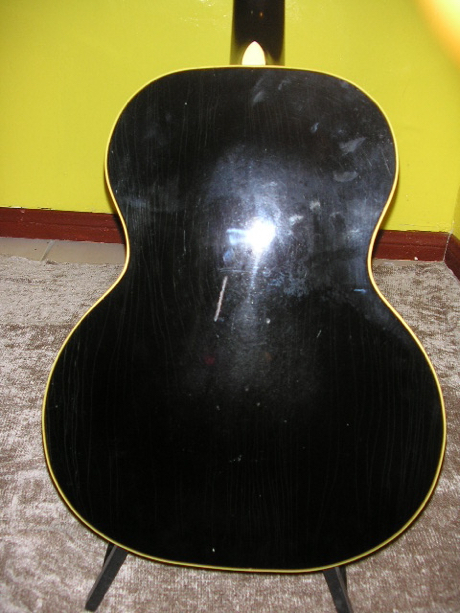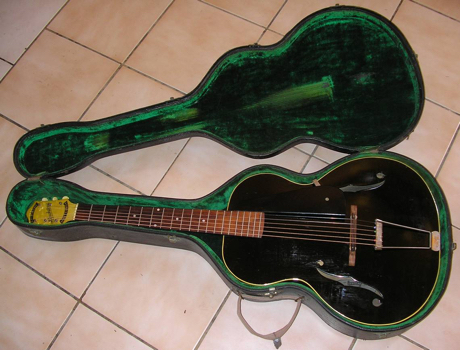
Close-up #11: 1932 Blackstone SN 5707
This guitar has been offered for sale on various websites over the last few years – I have no affiliation with it, just saved the photos.
The headstock is the classic early Masterbilt style, with the rounded peak of the lower models. But unlike other models, this one sports a gleaming pearloid veneer with Epiphone/Masterbilt banners and model name "Blackstone" in black.
Pearloid is an imitation mother-of-pearl celluloid plastic material – often lovingly referred to as MOTS, short for "mother of toilet seat". The material was especially popular on the flashy banjos of the 1920s, often used on headstocks, fretboards and resonators. Epiphone also used pearloid on the headstocks and fretboard inlays of their "Recording" series guitars which preceeded the Masterbilt series. The white color looks to have aged to a yellowish hue on this example.
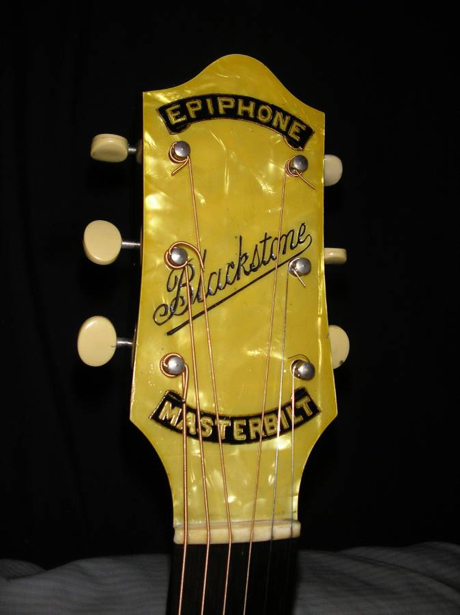
Inside the body the silver oval label of the early Masterbilts, with stamped serial number below: I read "5707", although not quite sure regarding the 3rd digit. This is the lowest SN we recorded so far for a Blackstone model, ...
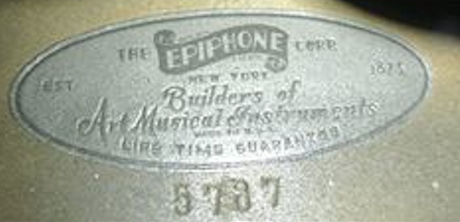
... and the only example with an all-black finish on body and neck – a striking visual contrast to the pearloid and the rosewood of fretboard and bridge. But this feature was short-lived: The next later documented Blackstone example sports a sunburst top and a headstock with black plastic veneer like other Epiphone models.
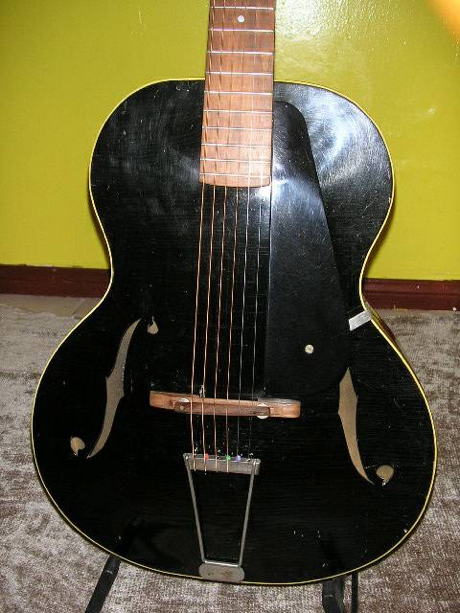
The nickel-plated trapeze tailpiece is the early "reverse" or "wrap-over" style, which was discontinued around 1933. The 3-piece segmented f-holes were standard until changed to 1-piece cello-style by 1935 on all models.
This Blackstone appears to be in pretty pristine condition, including the stunning hardshell case with green plush lining. According to the seller's description, the body of this example is 15 1/2" wide = "Auditorium" size in Epiphone's terminology.
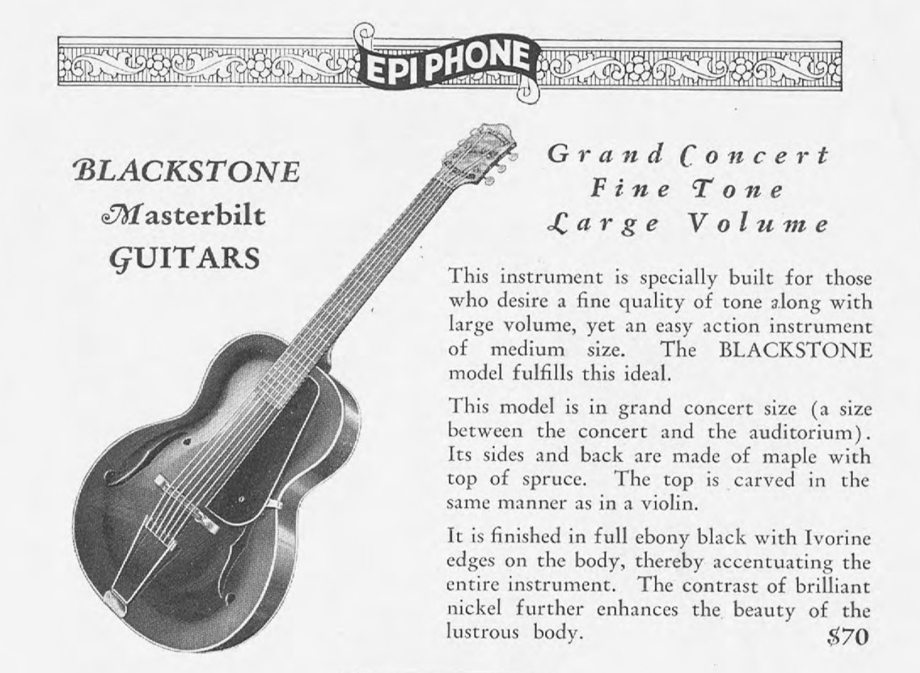
Above the Blackstone model how it appeared in the 1932 catalog – described as "finished in full ebony black" with (pressed laminated) maple back and sides and carved spruce top. The pearloid headstock is clearly recognizable. The body size is specified as "Grand Concert" = 14 3/4" wide, as seen on all pre-1934 Blackstones we know of – except this earliest example featured here which is larger! Well, not the only case of very early Masterbilt examples differing from the 1932 catalog specs.
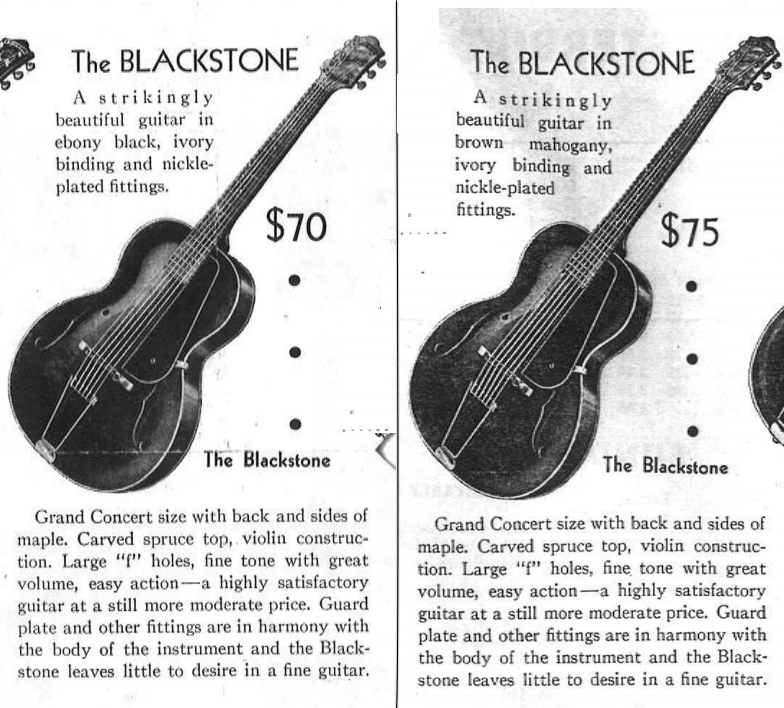
There is an early Epiphone Masterbilt flyer of which two slightly different versions are known to exist. This flyer was dated to 1931 by some historians, however we believe it was published later than the 1932 catalog – in c. 1933. Pictured above how the Blackstone model appeared in the two flyer versions (which reused the pictures of the catalog): Spot the difference ...!
Note that the price increased from $70 to $75 in the later version (on the right). And the finish description changed from "ebony black" to "brown mahogany" – although further down the blurb still specifies "maple" for back and sides ... (?)
Whatever they wanted to say there: The documented examples in our database suggest that at some point in 1933–34 the Blackstone indeed switched from maple to mahogany for backs and sides. And then back to maple by 1935.
(Oct 21, 2016)
